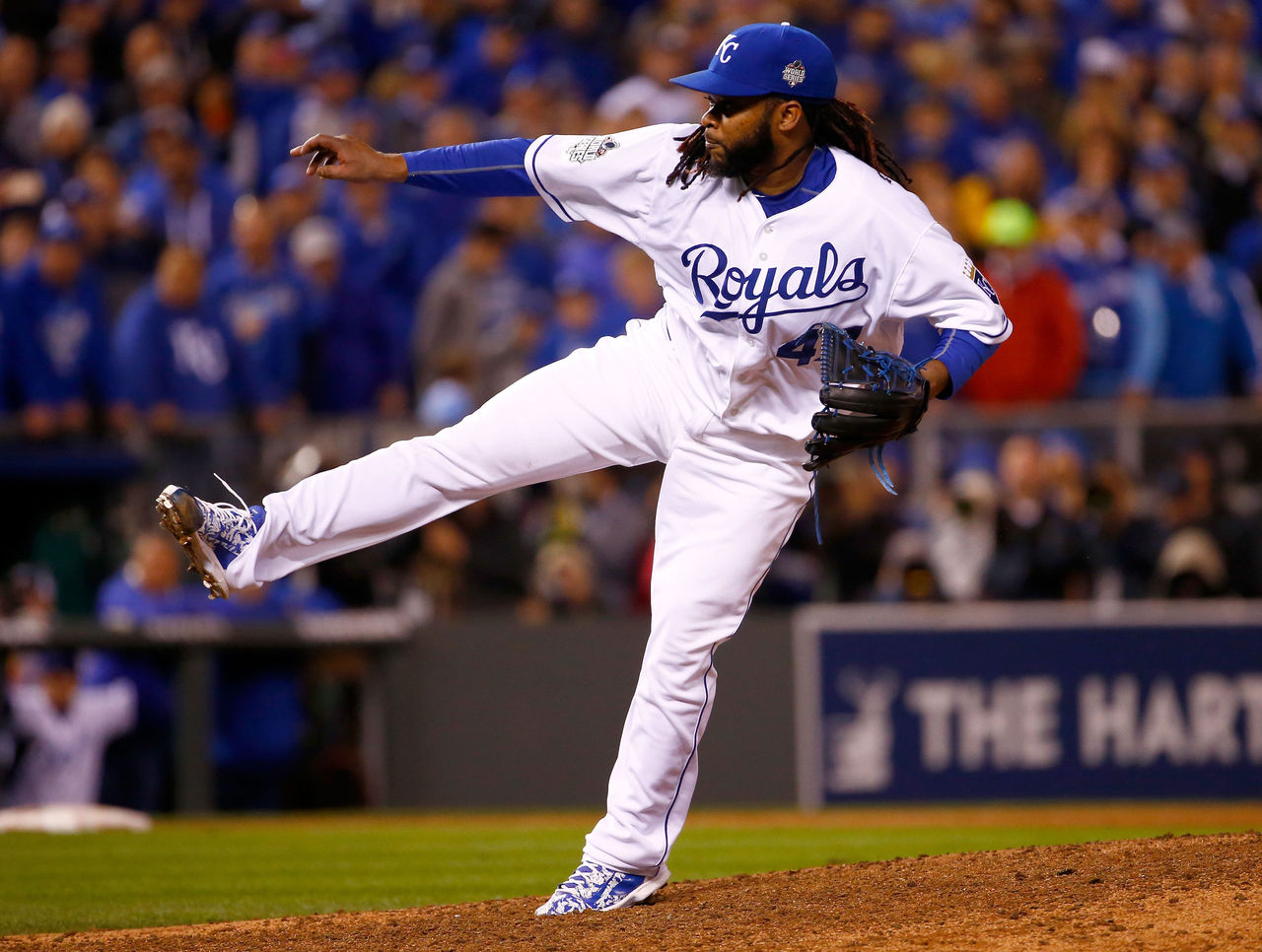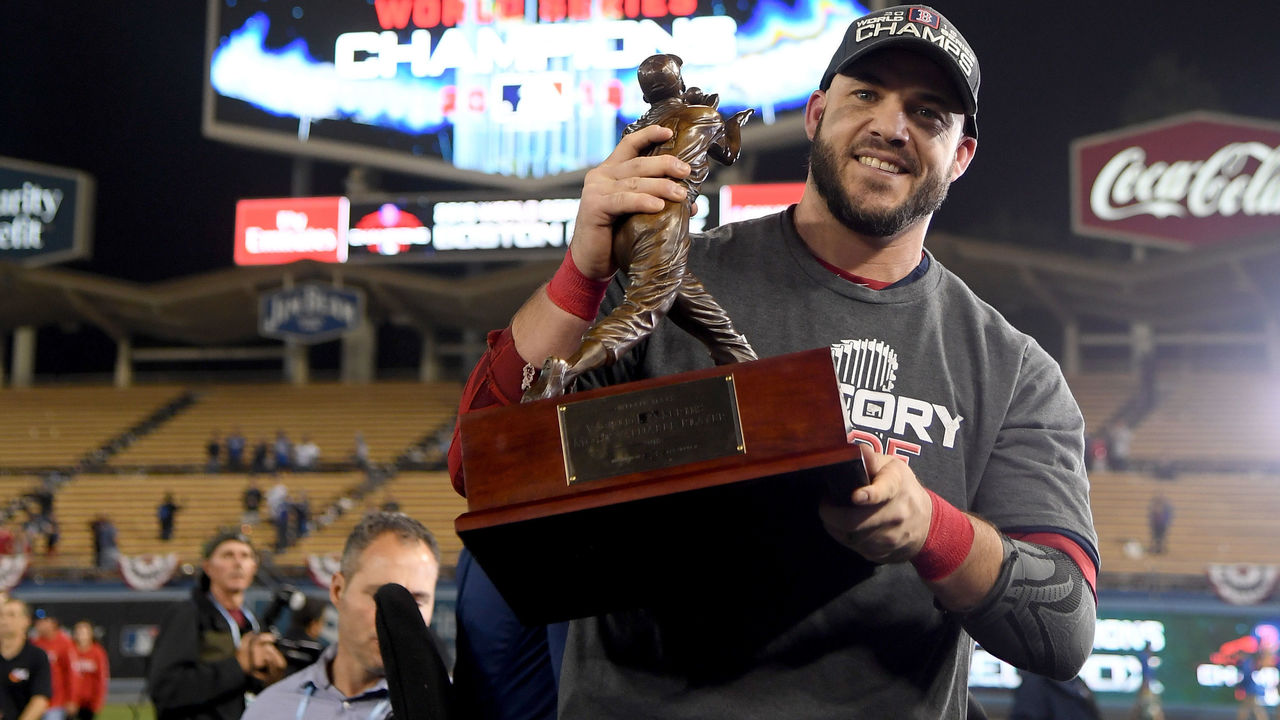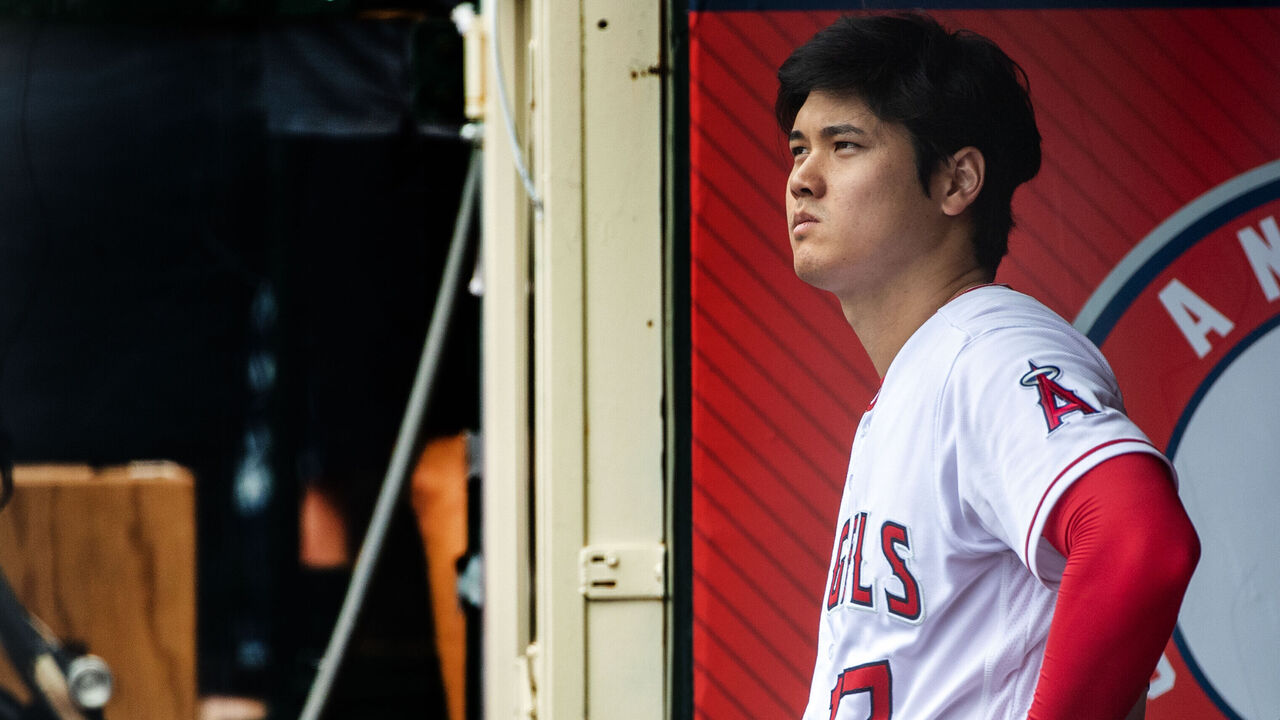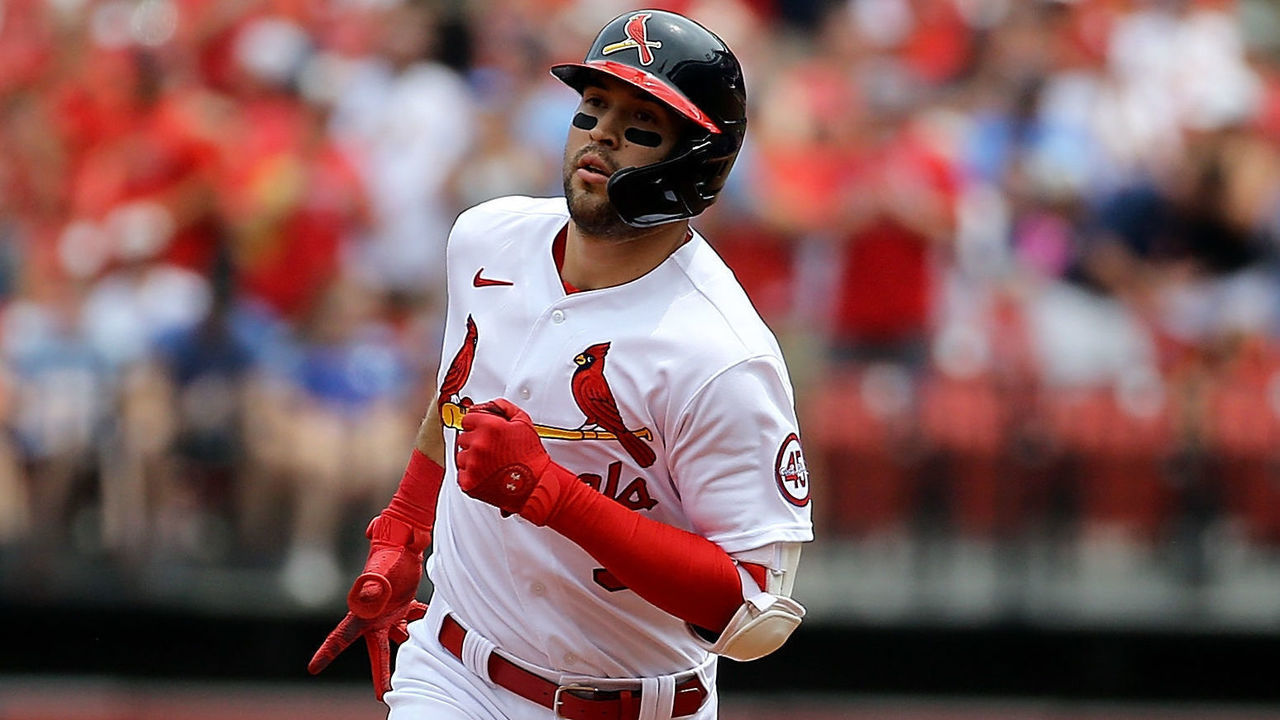What champs do at the deadline. The Angels did what? Who should buy, and more
Starting Lineup is a bi-weekly collection of reporting, observations, and insights from the Major League Baseball beat.
Leading off …
All contenders face a similar trade-deadline dilemma: how much of tomorrow is worth trading today in the hopes of winning a World Series?
Teams have different philosophies, and different comfort levels making deals, as we've explored.
But recent history tells us that if a team wants to win it all, it better do something significant prior to the deadline, which is set for Tuesday, Aug. 1 at 6 p.m. ET, a few hours later than usual.
Yes, most deadline deals don't make much impact, as I've researched. Yes, most teams don't have great chances to win the World Series. (It's rare for a team to enjoy much better than a 20% chance to win the championship at this point in the season. The Braves are the only club with better than a 20% chance, at 25.6%, according to FanGraphs.)
Yet every World Series winner dating back to the 2010 Giants made a significant deadline acquisition, or multiple additions. (I defined "significant" as acquiring either a starting pitcher or relief pitcher who made multiple postseason appearances, or a position player who became an integral part of the lineup.)
Sandy Alderson got Ricky Henderson at the ‘89 trade deadline and won a World Series. He got HOFer Harold Baines another time. He said “there comes a time in some seasons that you have to reassure the players you are trying as hard as we ask them to play”
— Peter Gammons (@pgammo) July 24, 2023
A brief history of trades made five weeks or closer to the deadline:
- The 2012 Giants traded for Hunter Pence.
- The 2013 Red Sox traded for Jake Peavy, who made three postseason starts.
- The 2014 Giants also traded for Peavy, who made another four postseason starts for them.
- In 2015, the Royals made major splashes en route to a title by acquiring Johnny Cueto and Ben Zobrist. Cueto pitched a complete game in Game 2 of the World Series, allowing one run in the win, and Zobrist batted .300 in the postseason.

- The 2016 Cubs benefited from picking up Aroldis Chapman in the summer (though they perhaps overpaid).
- The 2017 Astros added Francisco Liriano prior to the non-waiver deadline and Justin Verlander at the waiver deadline. Verlander started six postseason games, winning four.
- Steve Pearce was far from a household name in 2018, but the deadline acquisition ending up the World Series MVP for the Red Sox.

- The 2019 Nationals added reliever Daniel Hudson (four postseason saves) at the deadline.
- In 2021, the Braves completely remade their outfield en route to an end-of-season surge and World Series title by adding Adam Duvall, Eddie Rosario, and Jorge Soler.
- The Astros last season added Trey Mancini, who ended up one of the least impactful players added to a title winner in the last decade, but he did make a combined 200 plate appearances in the regular season and postseason for Houston.
While some returns were pricier than others, many of the prospect packages surrendered are forgettable because flags fly forever.
Perhaps the lesson to contenders is this: As much as they don't want to move promising prospects, there's a price to remaining idle.
No. 2: The Angels did what?
Last week, we used specific criteria to examine which contenders would most benefit from adding Shohei Ohtani, an impending free agent, should the Angels move him.
One executive theScore spoke with this week believed Ohtani would make the most impact in Baltimore down the stretch and into the fall. Ohtani in October would have been a big deal for MLB.
Well, the Angels aren't moving Ohtani.
The Angels - with playoff chances at 17% entering play Thursday (up to 23% Friday after a doubleheader sweep of the Tigers) - elected to keep Ohtani and become buyers. And they were serious: they added White Sox pitchers Lucas Giolito and Reynaldo Lopez in a late-night trade Wednesday, at the price of two of their best prospects from an already-thin farm system.

Now, one can understand a team like the Angels, with low chances of reaching the postseason and doing damage in October, still not wanting to trade a once-in-a-100-years talent like Ohtani.
The problem is: they should have improved their team sooner.
They should have shown more urgency, commitment, and competence - in free agency and trade markets - before this point, before the clock neared midnight on their control over Ohtani.
And now one of the game's weakest farm systems - now baseball's worst according to FanGraphs - faces an incredibly long rebuilding period after this season. The Angels for years have featured some of the weakest draft and development results; they might very soon be another version of the Rockies.
They haven't made the postseason since 2014, despite rostering Mike Trout and Ohtani together in the majority of those seasons. And if they fail this year, they'll complete one of the biggest organizational missed opportunities of all time, with a bill to pay in the form of a weak developmental system for years to come.
No. 3: Who should buy
As of Thursday, there were 16 clubs with 30% or better chances of reaching the postseason, according to FanGraphs. Again, that doesn't include the Angels.
The expanded playoff field means more clubs are in the race late in the season. There were also 16 clubs at 30% or higher at the same point last season - more than half the league.
In 2021, in the last full season with the previous format, there were 10. In 2019, 12.
So, the new normal is more potential buyers and fewer sellers.
But the question now becomes: how badly do teams want to invest in trying to hang onto a play-in round berth? The Blue Jays, clutching the final wild-card spot in a crazy-competitive AL East, are a great example.
"Even if you get past the wild-card round, you're going to have to face an excellent team," one executive said.
That executive suggested teams like the Orioles, Diamondbacks, and even the Marlins - clubs that don't usually have pathways to division titles in strong divisions (O's, D-Backs) or a playoff berth (Marlins) - ought to be more aggressive prior to the deadline. Teams that have made more regular playoff appearances and have lower chances this year ought to be less aggressive.
No. 4: Surprise sellers
Few had the Mets as sellers in the spring, but their sell-off appears underway with the reported trade of closer David Robertson, one of the few Mets having a strong 2023. If the club can work with Max Scherzer and Justin Verlander on their no-trade clauses, it could trade from a position of strength, as most contenders continue to look for pitching help. The Padres could fall into this camp, too; the White Sox already took advantage.
Perhaps the most interesting team to watch until the deadline is St. Louis.
For starters, it's been a long time since the Cardinals were sellers.
Depending on what one considers selling, the last time the Cardinals dealt major leaguers prior to the deadline was in 1998, when they traded Royce Clayton and Todd Stottlemyre to Texas for Darren Oliver and Fernando Tatis. In 1990, they traded Willie McGee to Oakland. Those are the most recent examples. It's been awhile, and speaks to remarkable consistency.
It also means this management group will be operating in an alien position, but one it ought to lean into.
The Cardinals have an outfielder logjam. They claim they want to keep Tyler O'Neill (perhaps posturing), who was seemingly in the doghouse earlier this season, while Dylan Carlson is too young and too talented to be a bench player. One should be moved.

Jordan Montgomery is a quality starter on an expiring deal who should be moved, too.
And instead of extending hard-throwing reliever Jordan Hicks, which is being reported as a possibility, the club ought to try to trade his quality relief arm. After all, in the postseason, high-leverage relievers matter more - and will pitch more - than back-end starters, and relievers are highly volatile year to year.
The club ought to also consider moving Willson Contreras and reset its catching position with a defense-first approach, even if it means eating cash.
No. 5: Another ex-Bally team, another step closer to a new model?
With the D-Backs joining the Padres in leaving embattled regional sports network Bally, we're perhaps another step closer to the next model of distributing games.
"It's not ultimately whether they will fail, it's when they will fail," Diamondbacks' managing general partner Ken Kendrick told JohnWallStreet about Bally Sports and Diamond Group.
This is the path more and more teams will face: they'll need to find a different local cable provider while also placing their in-market games on the MLB.TV streaming platform for local distribution. Streaming is the future.
MLB clubs can be comforted by this number: Apple announced it surpassed one million paid subscribers for its MLS streaming product, which broadcasts all the league's games. This suggests a direct-to-consumer product has long-term potential.
No. 6: Draft becoming college-only affair
This year's draft wasn't only dominated by college stars at the top; it was dominated by college stars throughout the top 10 rounds.
From 1992-2001, there was nearly an even split between college (53.4%) and high school players in the first 10 rounds.
But in the decade after the "Moneyball" draft, the college share of picks in the first 10 rounds rose to 66.7%.
And from 2012-21, as the bonus-pool era came along, the college rate jumped to 73.9% in those rounds.
The first 10 rounds this year? A whopping 80.6% of selections were college players.

And it's not simply the product of COVID forcing players to college due to a truncated 2020 draft. A number of factors are in play. Teams are using leverage over college seniors to manipulate the bonus pool; the "Moneyball" approach continues to be used; fears of prep pitcher injury risk remain; and prospects want to use college more as a de facto affiliate level, especially as college player-development abilities are improved. Remember, MLB teams have cut down on affiliate counts; the SEC, ACC, and Pac-12 are essentially affiliate levels now.
No. 7: We can't have nice things
It's been another year of too many injuries to too many talented arms. Most recently, it's in Japan, where Roki Sasaki - billed as perhaps the most talented pitcher ever in NPB - suffered a torn core muscle. Sasaki, who averages nearly 100 mph with his fastball along with excellent command and secondary offerings, was enjoying a remarkable season:
If his season is over, here are Roki Sasaki’s 2023 numbers:
— Shawn Spradling (@Shawn_Spradling) July 25, 2023
85 IP
7-2
1.48 ERA
0.72 FIP
0.71 WHIP
130 K / 15 BB
99mph avg FB velocity
5.1 WAR
He was putting together a truly historic season. pic.twitter.com/UdrbeZU9w7
Sasaki isn't a free agent until 2027, so his injury doesn't cloud his immediate MLB prospects. Assuming he returns to health and top form, he'll be the most sought-after international free agent since Ohtani.
The greatest remaining inefficiency to be solved across all levels of pro baseball is how to keep arms healthy.
No. 8: Royals, A's chasing dubious history
Kansas City and Oakland are on pace for 108-plus losses. There haven't been two 108-game losers in the same year since 1909. Colorado could be the third 100-loss team this season. There were four 100-loss teams last season.
Clearly, incentives to not be terrible aren't strong enough. Calling these teams "bad" is an understatement.
No. 9: Focus on size of the pie, not the split
Only 11 MLBers all time have signed for more guaranteed dollars than what NBA and Celtics star Jaylen Brown agreed to earlier this week (five years, $304 million).
NFL quarterbacks (see Justin Herbert's five-year, $262.5-million deal) are now routinely enjoying greater annual average values than MLB stars - and in some cases more guaranteed dollars, too. This wasn't the case a few years ago.
While they're different sports, with much different CBAs, MLB players have for so long fought to protect the open market and top-end earning potential. The belief is it helps the stars but also trickles down to the rest of the market.
One issue, however, is that most players never reach arbitration let alone free agency. MLB teams lean on minimum-salaried labor with some of the lowest minimums in major pro sport. And now top-end salaries are being challenged, too.
There's a simple explanation: NFL and NBA revenue growth rates have outpaced MLB's.
Perhaps the lesson is this: Growing the sport - and thereby growing the revenue pie - should matter more to players and owners, more than a singular focus on who's earning the slightly greater share of said pie every CBA cycle. A rising tide helps everyone in the business, and rising tides mean fans are responding to a better product.
This year's attendance bump, due in part to new rules and the pitch timer, likely speaks to that. Everyone benefits from a more compelling product.
Eight of Tuesday’s 15 games drew more than 36,000 fans as @MLB saw its best non-holiday Tuesday since 2015 and the second best such Tuesday since 2008. pic.twitter.com/7VxzJnLX8c
— MLB Communications (@MLB_PR) July 26, 2023
Stat of the week: 5/15
Elly De La Cruz became the second-fastest player to five career home runs and 15 career stolen bases since 1900, joining Barry Bonds in 1986. Only Gary Redus did it faster, in 27 games, in 1982-83, according to ESPN Stats and Info.
As for his sixth career home run, don't upset De La Cruz:
“Almost hit a homer in the first inning... but didn’t”
— Cincinnati 💔 (@CincyProblems) July 25, 2023
The Brewers Scoreboard right before Elly De La Cruz BLASTED one out of the stadium. 😈 pic.twitter.com/M2M69ihnPp
"That ball had a family."
— MLB Pipeline (@MLBPipeline) July 25, 2023
Elly De La Cruz launches a homer in his second straight game for the @Reds -- 113.7 mph | 456 ft. pic.twitter.com/d48uWg9bA9
He said it
Scott Rolen recalled a conversation with his father from his high school days during his Hall of Fame induction speech:
"Well, Dad, I can't handle the ball, I can't shoot, I'm completely out of basketball shape, and everybody in the entire gym, including the coach, is better than me," Rolen said.
Rolen's father, Ed, responded: "You told me what you can't do. What can you do?"
Rolen said he could outwork, outhustle, and put in more effort than his competition.
"Well, do that, then," his dad said.
"'Well, do that, then,' put me on this stage today," Rolen said in Cooperstown.
He also said it
I’ve noticed around the league, not just in Boston, there are a lot of errors that go in the book as hits. Makes you wonder if the league office wants more hits to pad batting average so they can say how much the new rules worked.
— Will Middlebrooks (@middlebrooks) July 26, 2023
I've also noticed that any error must be blatant this year. It seems that way, at least. Rethinking hit and error rulings should perhaps be a focus of an offseason committee.
You don't see that everyday
A good, old-fashioned eight-three-five triple play:
The Braves turn a triple play!
— Awful Announcing (@awfulannouncing) July 26, 2023
(And the Red Sox have brutal baserunning)
Here's Brandon Gaudin on the call for Bally Sports South. ⚾️🎙️ pic.twitter.com/HgqAr1xigN
Travis Sawchik is theScore's senior baseball writer.